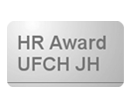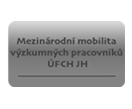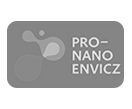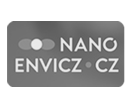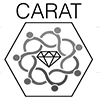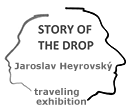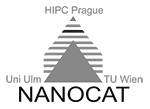Microemulsions and gels for cleaning surfaces of historical materials
The most gentle and at the same time effective microemulsion cleaning systems for removing high-molecular substances from the surface of historical materials. They gently remove acrylic or vinyl polymers, waxes, oils or unwanted monomeric or polymeric hydrophobizing agents.
The issue addressed
Removing unwanted material from the surface of historical artifacts is one of the most complex operations in the restoration of cultural heritage objects. Products that are aggressive to the material being cleaned and can lead to irreversible damage are often used for cleaning. Upon contact, they can damage the user's health, their preparation is complicated and expensive. During restoration processes, it is essential to remove only the required material without any damage to other layers and the artifact itself.
Our innovation
Our newly developed method eliminates the shortcomings of the procedures used today. It is based on a combination of two functions: basic micellar solutions or microemulsions of non-ionic surfactants, which remain the same for different target surfaces (or substances to be removed from the surface) and specific solvents, which in turn are selected according to the respective material to be removed. The main component here is water, the content of active ingredients is very low, in the range of several percent, which is advantageous in terms of environmental impact, method of production and price. The advantage of this method is that it facilitates the formulation of various cleaning compositions, which translates into easier and more economically advantageous production.
Main advantages
High efficiency in removing only the target material - Possibility to produce tailor-made cleaning compounds according to customer requirements - No residues are formed - Maximum care for the cleaned artifact, the health of restorers and the environment - Easy to manufacture from commonly available components without the use of special equipment - Favorable price relations - Wide range of application methods, eg pouring, painting, impregnation or spraying - Possibility of incorporation into gels, which facilitates the application of the product - On the basis of patented systems, the Ministry of Culture of the Czech Republic certified the Monument Procedure for a new method of surface protection of building materials.
Commercial use
Removal of layers, coatings or surface residues of various materials of historical artifacts (e.g. stone, wood, metals, oil paintings) - Increasing the efficiency of removing surface layers, with a low impact on the environment - A new method of surface protection of building materials by the method of hydrophobization with a thin surface layer, which ensures sufficient protection with unchanged surface properties.
Technical parameters
Surfactant concentration in aqueous medium higher than critical micellar concentration - Specific solvent content per unit percentage, possibly higher if necessary - Exposure time that can be set as needed in minutes up to about 2 hours - Consumption of cleaning systems 1 2 L / m2 of treated area
Note
The principle of the method and specific applications are protected by patents owned by the J. Heyrovský Institute of Physical Chemistry of the CAS public research institution in Prague: CZ 305475, CZ 305490, CZ 305526, CZ 305527, CZ 305528.
Wednesday, May 26, 2021 - 14:12
Translated with the financial support of the Capacity Development of ÚFCH JH, v.v.i. for Research and Development project; CZ.02.2.69/0.0/0.0/16_028/0006251; European Structural and Investments Funds, Operational Programme Research, Development and Education.







